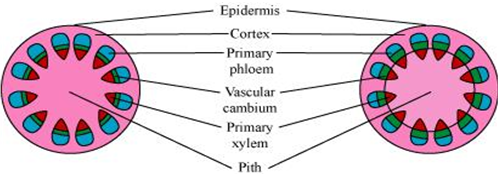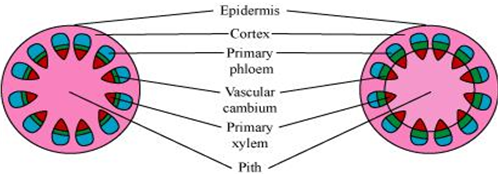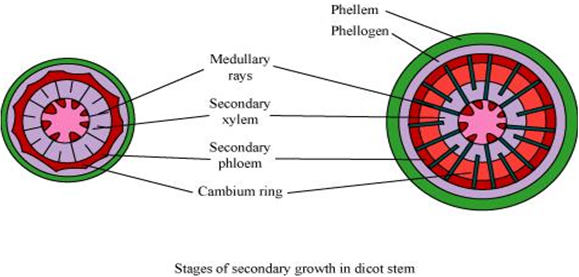In woody dicots, the strip of cambium present between the primary xylem and phloem is the interfascicular cambium. The cells of the medullary rays adjoining the interfascicular cambium become meristematic and form the interfascicular cambium. This results in the formation of a continuous cambium ring. The activation of the cambium ring results in the cut off new cells. The secondary phloem is formed by the cells which are cut off towards the periphery cells. The secondary xylem is formed by the cells cut off towards the pith. The cambium being more active on the inner side, the amount of the secondary xylem produced is more than that of the secondary phloem. At some places the cambium forms the narrow band of parenchyma called the secondary medullary rays. These medullary rays pass through the secondary xylem and secondary phloem in the radial directions.



The secondary growth in plants:
i. Increases the girth of plants,
ii. Increases the amount of water and nutrients to support the growing number of leaves.
iii. Provides support to plants.








